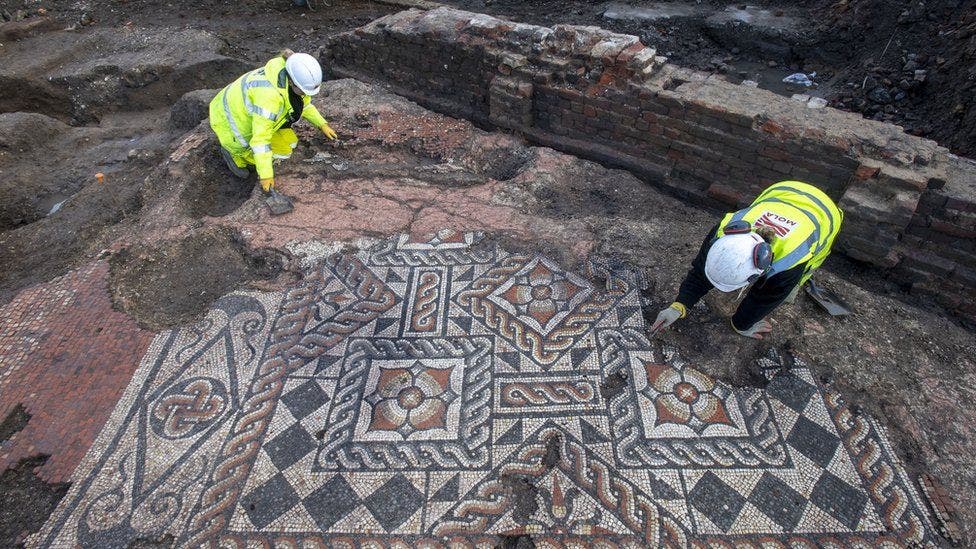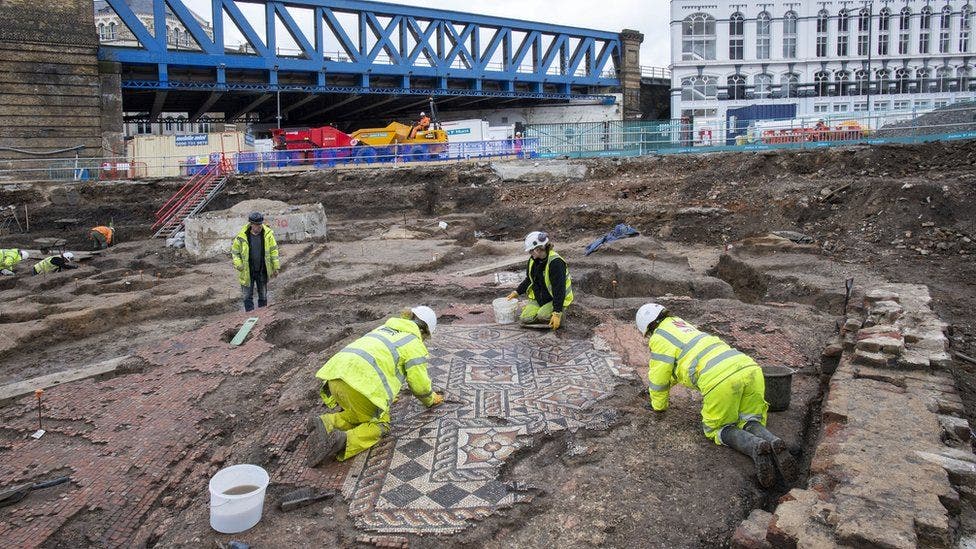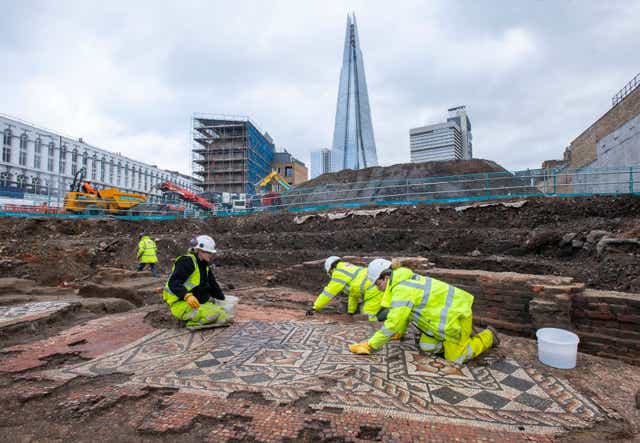If there’s a place you wouldn’t expect to find Roman archaeology, it’s probably smack down in the middle of a big city like London. But that’s exactly where researchers from the Museum of London Archaeology (MOLA) have found two decorated panels set in what is would have once been a Roman dining room from the late second or early third century AD. The mosaics lie close to The Shard, a 72-story skyscraper in central London.

The Romans deployed mosaics in a variety of private and public buildings, either on floors or on walls (though those on floors are far more likely to survive in time). They typically depict either artistic motifs or heroic/historical scenes.
In this case, the larger section measuring of the mosaic (measuring 5m x 3.5m / 16.4 x 11.4 feet) features the former: large, colorful flowers and bands of intertwining strands — a relatively common motif known as a guilloche. Meanwhile, the smaller of the two mosaics measuring 1m x 1.5m (3.2 x 4.8 feet) has a simpler design, with two examples of a decorative motif found in many cultures called Solomon’s knot, consisting of two intertwined stylized flowers and geometric motifs in red.
Needless to say, researchers were not expecting something like this in the heart of London.
“This is a once-in-a-lifetime find in London. It has been a privilege to work on such a large site where the Roman archaeology is largely undisturbed by later activity – when the first flashes of color started to emerge through the soil everyone on site was very excited,” MOLA site supervisor, Antonietta Lerz, told the BBC.

The mosaics were part of a Roman mansio — an official stopping place on a Roman road, or via, maintained by the central government for the use of officials and those on official business. Think of it as a sort of upmarket motel for Roman officials with business in and around the Roman city of Londinium, the capital of Roman Britain. The Roman Londinium, founded around AD 47–50, would go on to become London. The mansio was likely located on the outskirts of Londinium, connecting the city to the main road.
The excavations are part of a local regeneration program, which will design a new neighborhood comprising of homes, workspace, shops, and restaurants. The project, called the Liberty of Southwark, has already made several valuable archaeological findings, offering a window into Roman-day London.
The mosaics will now be carefully recorded and relocated off-site, where more elaborate conservation work is to be carried out. Afterward, they will be displayed publicly, though details have not been announced. Two more London mosaics (discovered in 1803 and 1869) are currently under display at the Museum of London and the British Museum respectively.
Ultimately, after the relocation and conservation work is done, work will continue on the construction project.







